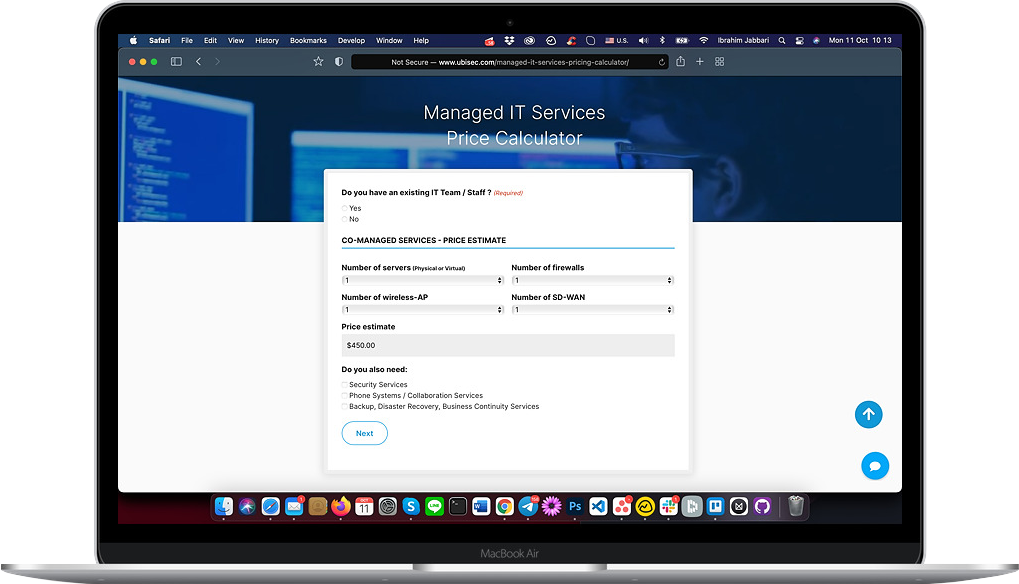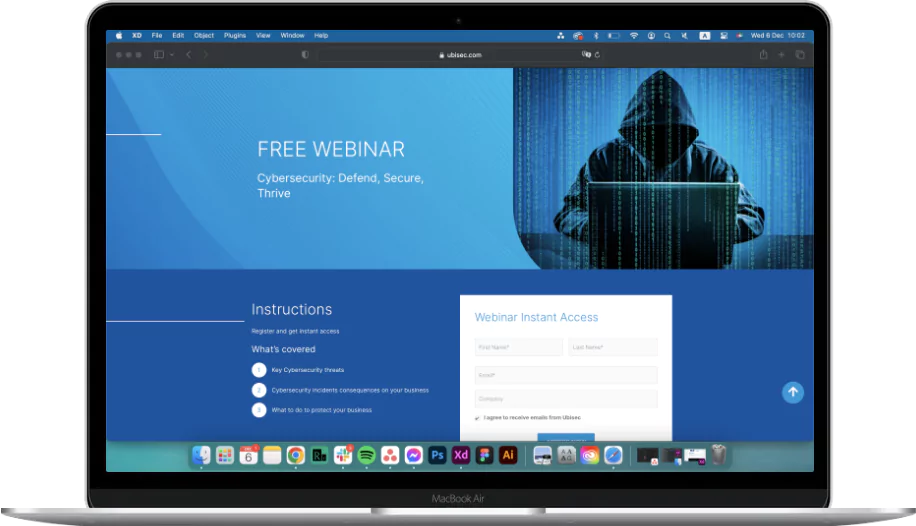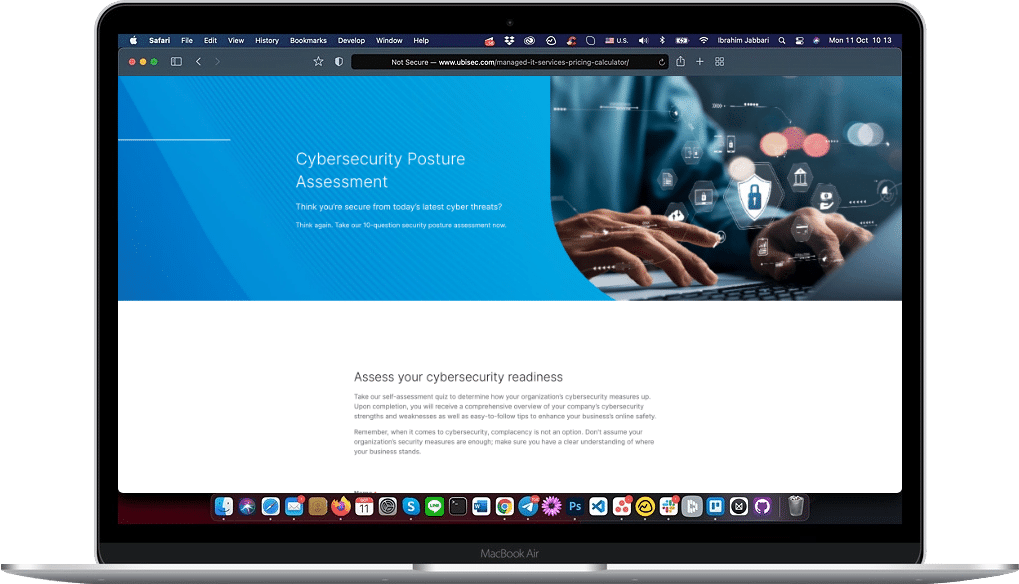
Software-defined wide area network (SD-WAN) is a hot topic in the IT world today, with many companies in Los Angeles, Orange County, and Washington, DC transitioning to this technology from their legacy WANs. Those that used to rely on expensive Multiprotocol Label Switching (MPLS) connections are now reaping cost savings and numerous other benefits from partnering with SD-WAN vendors like Ubisec.
While you may think that SD-WAN only makes sense for large companies, you may find that your small- or medium-sized business (SMB) can also gain much from it. To help you assess whether SD-WAN is a good fit for your company, here are things to consider.
☑ Interconnection of multiple sites
The 2019 SMB IT Security Report revealed that 40% of SMBs have at least five different locations. And with stay-at-home orders still imposed in some states across America, SMBs are operating in more locations than ever before. If your company is operating in multiple sites and requires reliable connectivity among them, then you’ll gain much from using SD-WAN.
Speedy and low-cost deployment
With traditional WAN architectures, it usually takes months to set up a new location. You need time for circuit delivery, equipment provisioning, and on-site hardware configuration.
In contrast, SD-WAN is software-based and can be delivered via the cloud, so you can easily bring a new branch site online. Rather than manually configuring hardware one by one like with traditional WAN architectures, SD-WAN lets you define and manage policies (e.g., policies for controlling traffic paths, failover, monitoring, etc.) from a single central platform and roll them out to all devices in remote sites simultaneously.
SD-WAN also allows you to do away with costly MPLS circuits since it can use cheaper and faster connections such as broadband. The price of a private MPLS circuit is around $585 per Mbps, while it’s only $2–10 per Mbps for a standard broadband line. So if you multiply the price difference of those two connections by the number of remote locations you have, you’ll end up with the substantial cost savings you can achieve by using SD-WAN.
With SD-WAN, you don’t have to deploy firewalls or other cybersecurity hardware in every office branch either. Instead, you can use SD-WAN’s central platform to implement security solutions, protocols, and policies across all remote locations. This helps you save both time and money.
Simplified management
Rolling out changes in the network (e.g., adding a new application or deploying upgrades) can be challenging in legacy WAN solutions. A technician would need to visit every branch office and apply the changes in every router. What a logistical nightmare that is for multisite companies! But with SD-WAN, you can use its single central platform to conduct hands-off network configuration for all remote sites.
☑ Use of bandwidth-intensive, latency-sensitive, or cloud-based applications
Does your company use apps that eat up a lot of bandwidth or require a fast, reliable internet connection, such as those used for video conferencing, online backup, and media streaming? If you answered yes, then you have a compelling case for SD-WAN.
Consolidated view
With SD-WAN’s single central platform, you have a consolidated view of your entire network and all of the applications that you use, whether these are hosted on-premises or in the cloud. This allows you to easily analyze and manage app performance, thereby improving app availability.
Intelligent traffic routing
SD-WAN intelligently selects the best path for network traffic based on your defined business priorities. For example, its general routing decision can be based on the lowest network costs, but it can prioritize application availability for traffic coming from latency-sensitive programs such as voice calling apps. This means you will never experience choppy or dropped calls even if there’s an unexpected spike in bandwidth usage in the network. Traditionally, you could only achieve the same outcome by using an MPLS circuit solely dedicated to carry voice call traffic, which can be expensive and prone to underutilization.
But with SD-WAN, there is no need for dedicated lines since it can dynamically route traffic to any available WAN transport service (e.g., MPLS, broadband, and 4G LTE). SD-WAN also monitors and analyzes network traffic in real-time, allowing it to support bandwidth-intensive apps simultaneously.
The more advanced SD-WAN solutions can even use a combination of different WAN transport services to carry traffic for a single session. For example, the same voice call can use both broadband and MPLS. In contrast, legacy WANs are managed on separate networks on broadband and MPLS.
Automatic failover
When you’re using apps that require real-time internet connection (e.g., cloud-based programs), even just seconds of network outage can result in detrimental outcomes, such as dropped video or voice calls. That’s why it’s so crucial to have a quick failover process, whereby your standby system kicks in as soon as your primary one goes down.
The problem with legacy WAN architectures is that when your primary connection goes down, you still need to call your IT provider, wait for a response, and then get manually switched over to the backup connection. On the other hand, SD-WAN’s real-time traffic monitoring allows it to automatically divert traffic to an available connection.
☑ Existing network architecture
If your company has invested in other network technologies such as broadband, MPLS, DSL, or 4G, you don’t have to throw all of that away and start from scratch just to use SD-WAN. SD-WAN solutions can be deployed as a network that runs on top of an existing network, which means that the existing network doesn’t have to suffer abrupt disruptions when SD-WAN is deployed. As mentioned, SD-WAN can route traffic to multiple WAN transport services.
But should you wish to reduce your dependency on expensive MPLS circuits and replace them with cheaper alternatives, you can easily do so since SD-WAN can also route traffic to broadband lines.
If you’ve ticked any of the boxes above, then SD-WAN is definitely the right choice for your business. But don’t just go with any SD-WAN solution, go for the highly secured, most trusted Cisco SD-WAN.
Did you know?
Cisco SD-WAN has built-in next-generation firewall (NGFW), domain name system (DNS) security, and next-generation antivirus (NGAV) to defend against advanced network threats.
Ubisec is a Cisco-certified partner that can help SMBs like you implement SD-WAN without breaking your budget. Learn more about our SD-WAN-as-a-Service offering. We cater to businesses in Los Angeles, Orange County, and Washington, DC.








